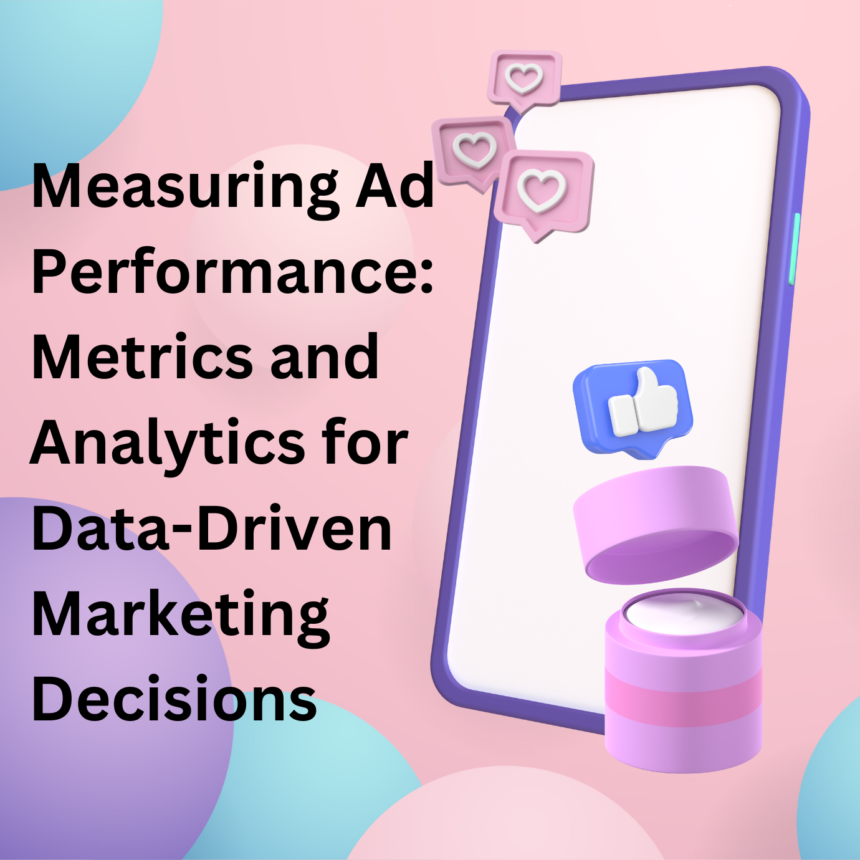Measuring ad performance is essential for data-driven marketing decisions. It allows you to understand the effectiveness of your advertising efforts and make informed decisions to optimize your campaigns. Here are key metrics and analytics to consider when measuring ad performance:
1. Impressions: Impressions measure the number of times your ad is displayed to users. It helps gauge the reach and visibility of your ads.
2. Clicks: Clicks represent the number of times users click on your ad. This metric indicates the level of interest and engagement with your ad.
3. Click-Through Rate (CTR): CTR is calculated by dividing the number of clicks by the number of impressions. It indicates the percentage of users who clicked on your ad after seeing it. A higher CTR suggests that your ad is resonating with the audience.
4. Conversion Rate: Conversion rate measures the percentage of users who complete a desired action after clicking on your ad. This action could be making a purchase, filling out a form, or signing up for a newsletter. A higher conversion rate indicates that your ad is effectively driving desired actions.
5. Cost per Click (CPC): CPC measures the average cost you pay for each click on your ad. It helps evaluate the efficiency and cost-effectiveness of your advertising campaigns.
6. Return on Ad Spend (ROAS): ROAS calculates the revenue generated for every dollar spent on advertising. It helps assess the profitability of your ad campaigns and determine the effectiveness of your investment.
7. Engagement Metrics: Engagement metrics, such as likes, shares, comments, and video views, measure the level of interaction and involvement with your ads. They indicate how users are engaging with your content and can provide insights into audience preferences.
8. Bounce Rate: Bounce rate measures the percentage of users who leave your website or landing page after viewing just one page. A high bounce rate may suggest that your ad or landing page needs improvement to better engage and retain users.
9. Return on Investment (ROI): ROI evaluates the overall return on your advertising investment. It considers the revenue generated and the costs incurred to determine the profitability of your campaigns.
10. Audience Insights: Utilize analytics tools to gain insights into the demographic, geographic, and behavioral characteristics of your audience. Understanding your audience’s preferences and behaviors can help refine your targeting and optimize your ad campaigns.
11. Attribution Models: Attribution models attribute conversions and sales to specific ads or touchpoints in the customer journey. It helps determine the most effective channels and ads that contribute to conversions.
12. A/B Testing: Conduct A/B testing by creating multiple variations of your ads and comparing their performance. Test different elements such as visuals, headlines, calls-to-action, and ad placements to identify the most effective combinations.
13. Ad Frequency: Monitor ad frequency to ensure that your audience is not being overwhelmed with repetitive ads. High ad frequency can lead to ad fatigue and decreased engagement.
14. Landing Page Metrics: If your ad directs users to a landing page, track metrics such as bounce rate, time on page, and conversion rate specific to the landing page. These metrics provide insights into the effectiveness of your landing page in driving desired actions.
By tracking and analyzing these metrics, you can gain valuable insights into the performance of your ads and make data-driven marketing decisions. Regular monitoring and optimization based on the analytics will help you improve the effectiveness and ROI of your advertising campaigns.
